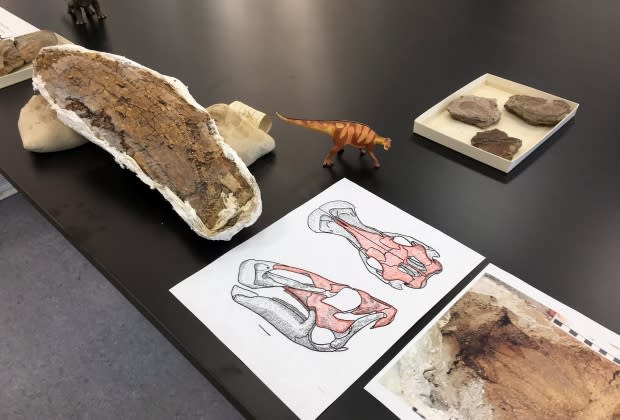65 million-year-old fossils found by scientists in Saskatchewan
It was a busy summer for fossil hunters from the Royal Saskatchewan Museum.
This summer, scientists, students and volunteers scoured the province for significant dinosaur discoveries, finding everything from a long-necked dinosaur skull at Lake Diefenbaker to a duck-billed dinosaur near Shaunavon.
While each fossil hunter had their favourite finds, Ryan McKellar, the museum's curator of invertebrate paleontology, said a new variety of wasp that had been trapped in amber for more than 65 million years was particularly special.
"I almost did cartwheels when the students turned up the first insect from Saskatchewan amber," he said.
While Saskatchewan's fossil beds may not be as well known as their counterparts in nearby Drumheller, Alta., McKellar said Saskatchewan has a wealth of untapped resources. He said Saskatchewan covers a wide range of time periods and conditions dinosaurs lived in.

"We're really just getting into scraping the tip of the iceberg for a lot of these deposits," he said. "The more samples you have, the more complete your picture is."
While museum staff are busy travelling to dinosaur deposits all summer long, the finds often begin with the public's help.
"We rely pretty heavily on the public for turning us on to new sites and leading us to new discoveries," McKellar said. "A lot of the stuff we have today is a direct result of the public or the parks system leading us to new sites."

Now that summer is almost over, paleontologists will soon get down to the real work of studying the finds.
McKellar used the wasp trapped in amber as an example. He said researchers can look at how insects have evolved over millions of years and the conditions they lived in.
"It's a question of describing the amber deposit," he said. "Which group of trees produced it, what sort of conditions they were living under, and then describing some of the new species that were found."
Researchers will also be busy casting and moulding their finds, possibly preparing them for exhibit at the museum.

